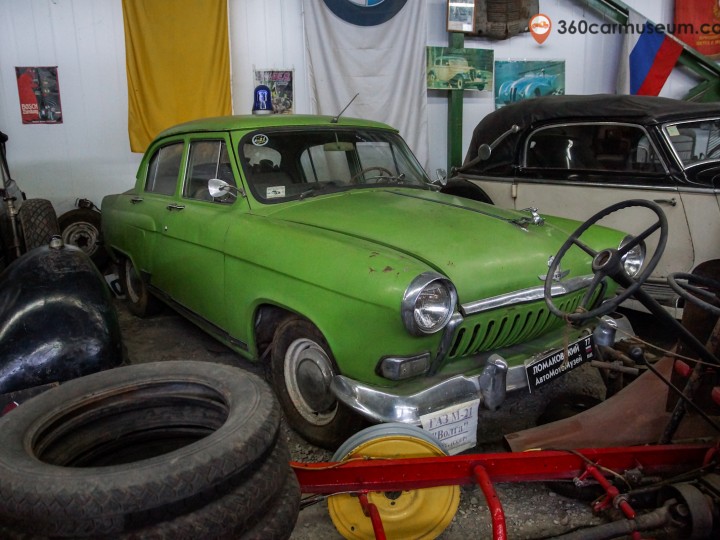1960 GAZ-21I "Volga"
Second Series Volgas were introduced in 1959, with a new grille painted the body color or in chrome. Halfway through the 1959 production run (model year 1959½), a vinyl cover was added to the dash. Added were windscreen washers and tubeless tires. Just Before the series concluded, telescopic shocks replaced the lever type. The 1961 Volgas were priced at 5,100 rubles.
Variants of the Series Two included the M21I and M21A taxi with the 70 hp (52 kW; 71 PS) inline four, and the M21K and right-hand drive M21H (for export) with the 80 hp (60 kW; 81 PS) engine.
The Volga was shown at the 1958 Brussels World's Fair, the same year production for export began. The Second Series Volgas became known for having no frills but outstanding durability, helped by the 23 cm (9.1 in) ground clearance. In 1959, a Volga took a class win at the Thousand Lakes Rally in Finland, and third at the Acropolis Rally. That year, the central lubrication system was deleted, in favor of a more traditional local grease-application nipple.
In early 1962 a small number of cars were built that combined features of the Second and Third Series.









